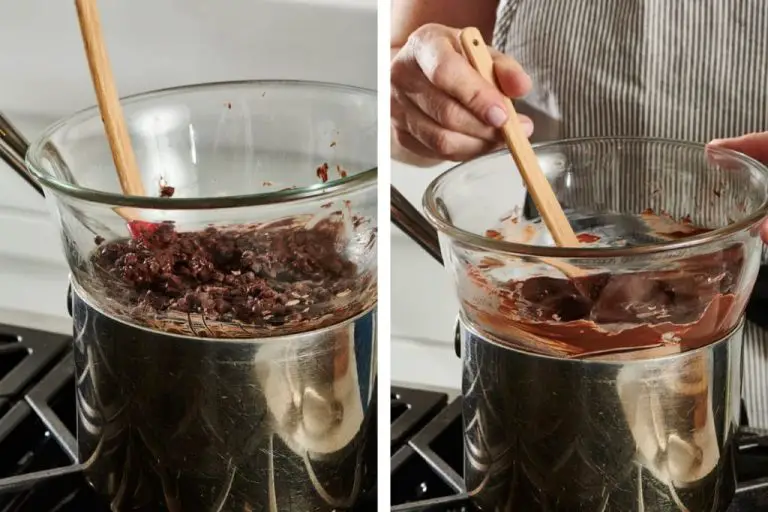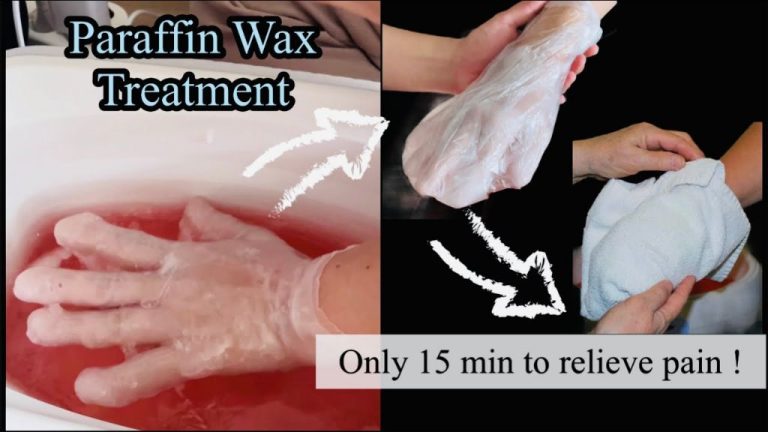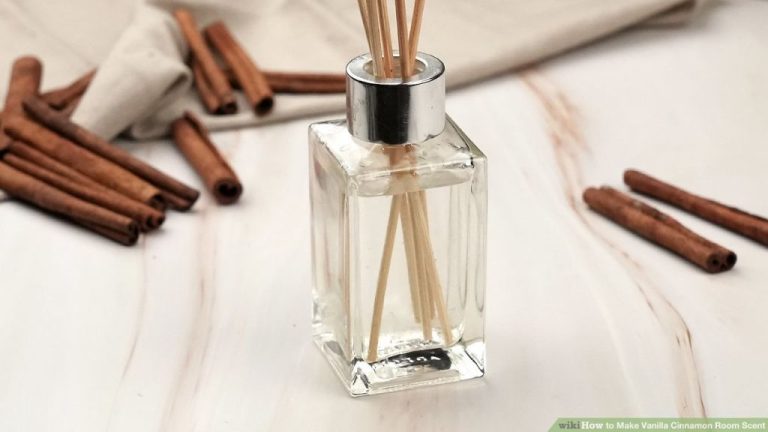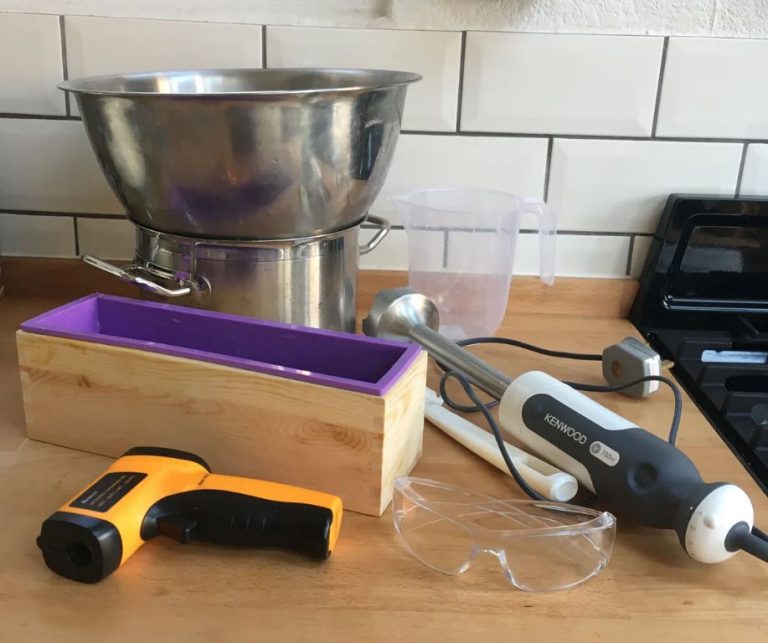Is It Okay To Wax Your Pubic Hair?
Pubic hair waxing is the process of removing unwanted hair from the pubic region by applying wax and strips of cloth or paper, then quickly ripping them off. This uproots the hair from below the skin’s surface. Pubic hair serves biological purposes like cushioning friction and retaining pheromones. Humans have removed pubic hair for centuries, originally using primitive techniques like seashells or pumice stones. Sugaring, a method of using sticky pastes to remove hair, dates back to Ancient Egypt around 1150 BC. Today, waxing is popular for aesthetic and sexual purposes.
This article provides a comprehensive overview of pubic hair waxing. It analyzes the potential benefits like smoother skin and practicality. However, waxing also has drawbacks such as irritation, ingrown hairs, and cost. To make an informed choice about pubic hair removal, readers need a full understanding of waxing procedures, aftercare, cultural contexts, and alternatives like shaving, creams, or laser hair removal.
Pros of Waxing Pubic Hair
There are several potential benefits to waxing pubic hair:
Aesthetic Preferences
Many people prefer the smoother look and feel of waxed pubic hair for aesthetic reasons. Waxing can create clean lines and shapes in the pubic region. Some prefer going fully bare while others opt for styled designs. According to an article on the Bare Wax Spa website, waxing leads to “incredibly smooth skin” in the treated area (https://www.barewaxspa.com/8-incredible-benefits-of-getting-a-brazilian-wax/).
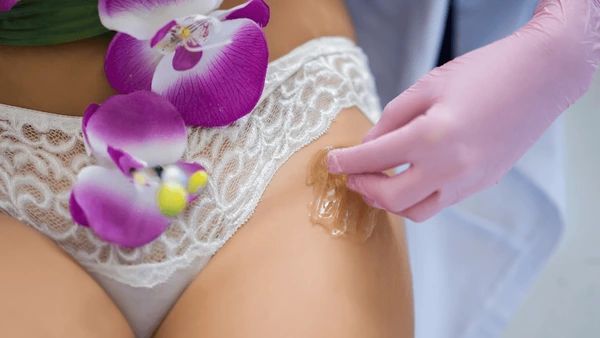
Improved Hygiene
Waxing removes pubic hair from the root, leaving the treated area clean and hair-free. This can help reduce odor and bacteria buildup in the pubic region. An article from the Cleveland Clinic states that the smooth skin after waxing “cuts down on places where sweat can accumulate and bacteria can grow” (https://health.clevelandclinic.org/what-is-a-brazilian-wax).
Enhanced Sensation
Some people find their sexual sensation improves with less pubic hair. The removal of hair follicles can increase sensitivity in the treated area. Waxing also delivers exfoliation benefits that may heighten sensation.
Cons of Waxing Pubic Hair
While waxing pubic hair has its benefits, there are some potential downsides to consider as well. Three main cons associated with pubic hair waxing include:
Pain and Discomfort
Waxing the pubic area can be quite painful, especially for first-timers. The process involves pulling out hair by the roots, which naturally causes discomfort. The pain level varies based on individual pain tolerance, but most agree that waxing the bikini line and Brazilian area tends to hurt more than other body parts. The pubic region is very sensitive and delicate.
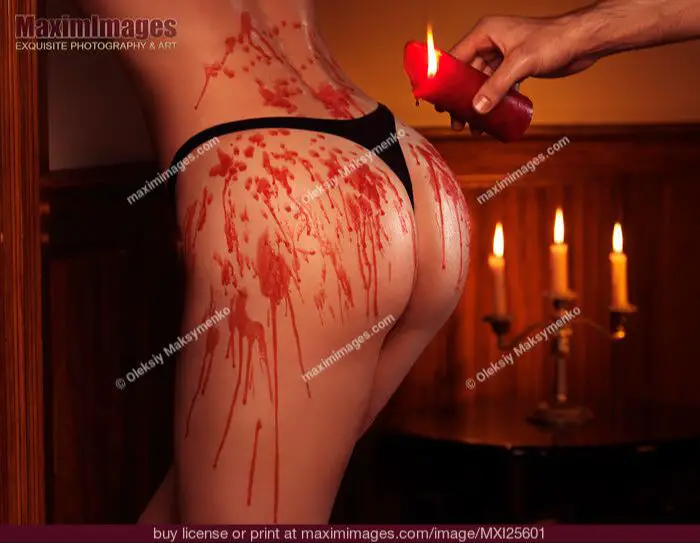
Some tips to minimize pain include taking ibuprofen beforehand, applying numbing cream to the area, and avoiding waxing before/during menstruation when sensitivity is highest. Still, waxing the pubic region is guaranteed to cause some degree of pain and discomfort for most.
Ingrown Hairs
Another common side effect of pubic waxing is ingrown hairs. When the hair starts to regrow after waxing, it can curl back into the skin and become trapped underneath the surface rather than growing straight out. This causes redness, inflammation, pimple-like bumps, and possible infection in the area.
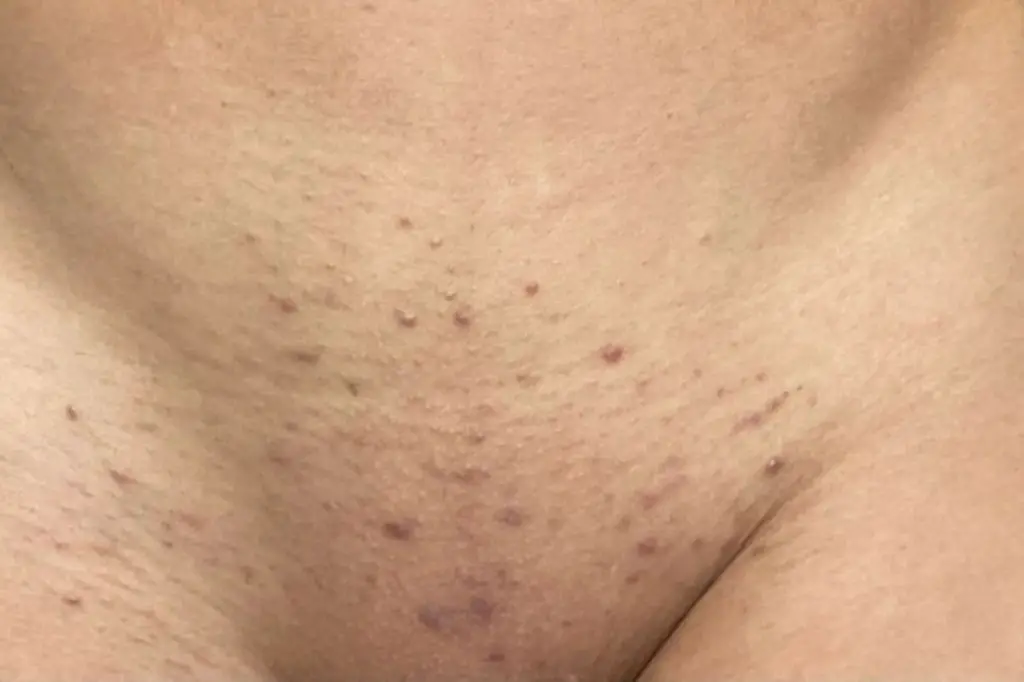
Ingrown hairs occur more often when waxing frequently, as the repeated trauma to the hair follicles can cause hairs to grow abnormally. Individuals with naturally curly hair are also more prone. Proper exfoliation and other aftercare can help prevent ingrowns.
Skin Irritation
The waxing process can lead to skin irritation, especially in sensitive areas like the bikini line. The hot wax adheres tightly to the skin and pulls aggressively, which can cause redness, swelling, rashes, and even broken skin or abrasions if not done properly.
Repeated waxing sessions can exacerbate irritation over time due to the cumulative trauma. Those with sensitive skin may experience more pronounced effects. Proper technique, high quality waxes, and aftercare lotion can help reduce irritation from pubic waxing.
How to Prepare for Pubic Hair Waxing
Preparing properly for pubic hair waxing can help make the experience less painful and get better results. Here are some tips for getting ready:
Let the hair grow out. Wax adheres better to hair that is at least 1/4 inch long. Allow the hair to grow out for 3-4 weeks before your appointment.

Take OTC pain medication. Taking an over-the-counter pain reliever like ibuprofen an hour before can help relieve discomfort during the waxing. Consult your doctor first.
Exfoliate the area. Gently exfoliating with a loofah or scrub can remove dead skin cells and allow the wax to adhere better to the hair. Avoid exfoliating right before the appointment.
References:
https://www.queenbeesalonspa.com/services/faq/how-to-prepare-for-a-brazilian/
https://www.browbetty.com/blog/first-time-brazilian-wax-tips
Pubic Hair Waxing Techniques
There are two main types of wax that can be used for pubic hair removal – soft wax and hard wax. Soft wax is the more traditional type of wax that requires cloth strips for removal. Hard wax adheres to the hair and dries on the skin, allowing it to be removed without strips.1
Soft wax works best on short hair and is gentler on sensitive skin. However, it can be messier and more painful since the strip must be pulled off quickly against the direction of hair growth. Hard wax is better for coarse or long hair because it shrinks wraps around the hair as it dries. It can minimize pain and irritation for sensitive areas.
Waxing can be done at home with DIY kits or by professional estheticians at salons/spas. While DIY waxing kits are more affordable and convenient, professional waxing is recommended for sensitive genital areas. Estheticians are trained in safe application techniques and provide a more comfortable, efficient waxing experience.
Professionals also have access to higher-quality waxes that are formulated for optimal performance and skin care. Salon waxes often contain oils and other ingredients to moisturize skin and minimize redness. The results also tend to last longer compared to at-home waxes.
Aftercare Tips for Pubic Hair Waxing
Proper aftercare is crucial for avoiding irritation, ingrown hairs, and other issues after pubic hair waxing. Here are some tips to help take care of your skin post-wax:
Avoid wearing tight or constricting clothing for a few days after your wax. Tight clothes can cause friction and irritation on freshly waxed skin. Opt for loose, breathable fabrics like cotton until the skin has fully healed.1
Apply aloe vera gel or a soothing lotion containing aloe to the area. Aloe vera has natural healing and anti-inflammatory properties that can help soothe irritation and redness after waxing.2
Exfoliate regularly with a gentle scrub or loofah to prevent ingrown hairs. Gently sloughing off dead skin cells allows hairs to grow through the skin normally. Just don’t exfoliate too soon after waxing as skin may be sensitive.3
Other aftercare tips include cleansing gently, avoiding hot tubs or swimming pools, and applying antibiotic creams if red bumps occur. With proper care, your skin will quickly bounce back after waxing.
Alternatives to Pubic Hair Waxing
While waxing is a popular method for removing pubic hair, there are other options to consider if you want to avoid the pain or hassle of waxing:
Shaving: Shaving with a razor is a quick and inexpensive way to remove pubic hair. However, regrowth happens faster with shaving compared to waxing, so you may need to shave more frequently for smooth results. It’s important to use a clean, sharp razor and shave in the direction of hair growth to avoid irritation. Moisturize after shaving to prevent ingrown hairs. [1]
Depilatory creams: Depilatory creams contain chemicals that dissolve hair at the surface of the skin. They are applied like a lotion and then wiped off after a few minutes, taking the hair with them. Depilatory creams offer smoother results than shaving, but can cause skin irritation for some people. Always do a patch test first. [2]
Laser hair removal: This long-term option uses laser energy to damage the hair follicle and inhibit regrowth. It requires several treatments over weeks or months but can provide lasting hair reduction when completed. Laser hair removal works best for individuals with dark hair and light skin. Consult a dermatologist to see if you are a good candidate. [3]
Cultural Attitudes Towards Pubic Hair
Throughout history and across cultures, attitudes towards pubic hair have varied significantly. In Western cultures, views on pubic hair have fluctuated over time. During Victorian times, pubic hair was seen as a symbol of uncivilization. But during the 1960s and 1970s, with the rise of feminism and anti-establishment views, going “au naturel” was embraced.
However, beginning in the 1980s and continuing today, the Brazilian wax has become increasingly popular in Western cultures. The Brazilian removes all pubic hair, with many viewing this as the ideal for attractiveness and cleanliness. This preference for hairlessness has been criticised by some feminists as conforming to unrealistic standards driven by pornography and the male gaze.
In contrast, attitudes differ greatly in other cultures. In some African and Asian cultures, pubic hair grooming is minimal, and letting it grow naturally is the norm. In Islamic cultures, pubic hair removal is discouraged for both hygienic and religious regions. And in Middle Eastern cultures, shaping pubic hair is common but not complete removal.
So opinions on pubic hair are far from universal. While hairlessness has dominated in Western media, many argue that the choice of whether to remove pubic hair or not should depend on personal preference, not cultural pressures. From a feminist lens, the key is not conforming to any one ideal, but women having autonomy over their own bodies.
Making the Right Choice
Waxing pubic hair is ultimately a personal choice based on your preferences and comfort level. Here are some things to consider when deciding if waxing is right for you:
Assess your personal preferences. Do you prefer the smooth look and feel of waxed hair? How much maintenance are you willing to keep up with? Waxing requires letting the hair grow out between sessions. If you strongly dislike hair growth, waxing may not be for you.
Consider your skin type. Those with sensitive skin may experience more irritation from waxing. Ingrown hairs are also more common for some skin types post-waxing. If you have concerns, consult a dermatologist to see if waxing could be risky for your skin.
Consult a dermatologist if needed. A dermatologist can assess if you’re a good candidate for waxing based on your skin type, medications, or conditions. They may recommend alternatives if waxing could lead to ingrown hairs, infections, or skin damage for you. See https://www.aad.org/public/everyday-care/hair-scalp-care/hair-removal-methods for guidance from the American Academy of Dermatology.
There are pros and cons to consider when waxing pubic hair. Make sure to weigh your personal preferences, skin type, and any advice from a dermatologist. This will help you determine if waxing is the right choice for your body.
Conclusion
When deciding whether or not to wax pubic hair, there are pros and cons to consider. Waxing can make the genital area smoother and some find it more hygienic and aesthetically pleasing. However, waxing can be painful, lead to ingrown hairs and irritation, and requires consistent upkeep. The risks can be minimized with proper technique, aftercare, and choosing alternatives like trimming for a shorter style.
Ultimately, the choice comes down to personal preference, cultural norms, and what makes you comfortable. There is no right or wrong decision – do what feels best for your body and lifestyle. Consider trying different grooming methods to see what you like best. It may take some trial and error to find your ideal pubic hair maintenance routine.


